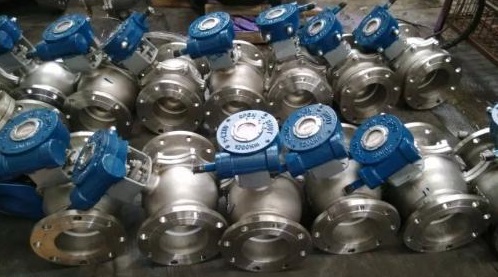The Structural Features of Wafer Butterfly Valve

In terms of structure, the wafer butterfly valve is slightly different from other valves. When there exists a size A on the offset between butterfly plate and sealing surface of valve stem shaft and the size B on the offset of valve body channel shaft is opened, the sealing surface of the butterfly plate will move away faster from the sealing surface of the valve seat than the sealing surface of the single eccentric valve.
On the large semi-circle rotating in a long radius, the tangent of rotation trajectory of butterfly plate sealing surface will form an angle with the sealing surface of the valve seat, which makes the sealing surface of the butterfly plate completely break away from the sealing surface of the valve seat so that the relative mechanical abrasion and the squeezing angle stroke between the butterfly plate and the sealing surface of the valve seat are much shorter during the process of opening and closing of sanitary butterfly valve.
When the butterfly plate rotates from 0 degrees to 8~12 degrees, the mechanical abrasion and deformation from squeezing are further lowered, and the sealing performance and service life are further improved.
The features of wafer butterfly valve:
1. This valve can be designed into a flange connection and clamp connection.
2. Actuating method can be manual, electric, or pneumatic.
3. The use of a “U” shape stainless steel sealing ring. The valve seat has a certain degree of elasticity. Whether in high-temperature or low-temperature situations, the valve and the butterfly plate both have excellent sealing performance.
4. It is a metal-to-metal linear sealing butterfly valve. The sealing surface of the butterfly plate uses soldered stainless steel or hard alloy. The sealing surface is abrasion-resistant and has a long service life.
5. This butterfly valve has excellent sealing performance and is high-temperature resistant, pressure-resistant, abrasion-resistant, and corrosion-resistant.




